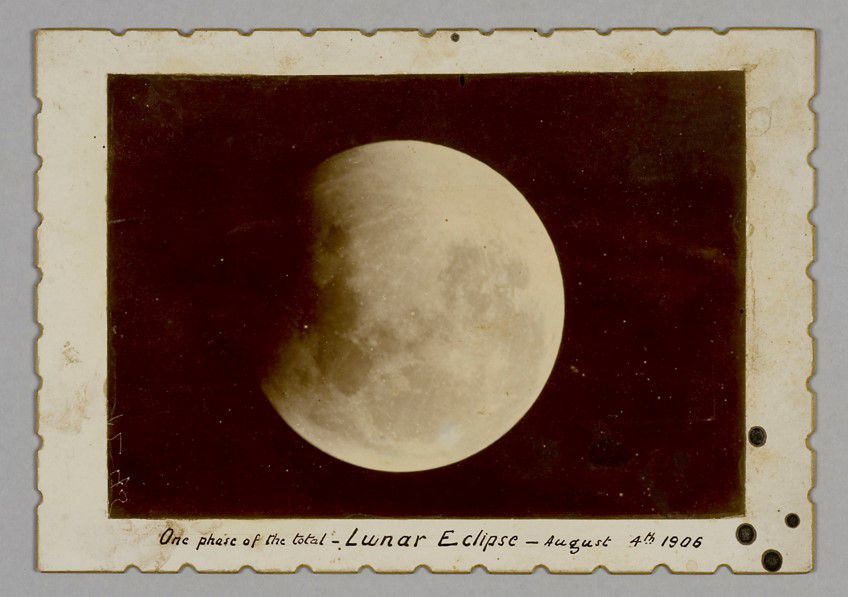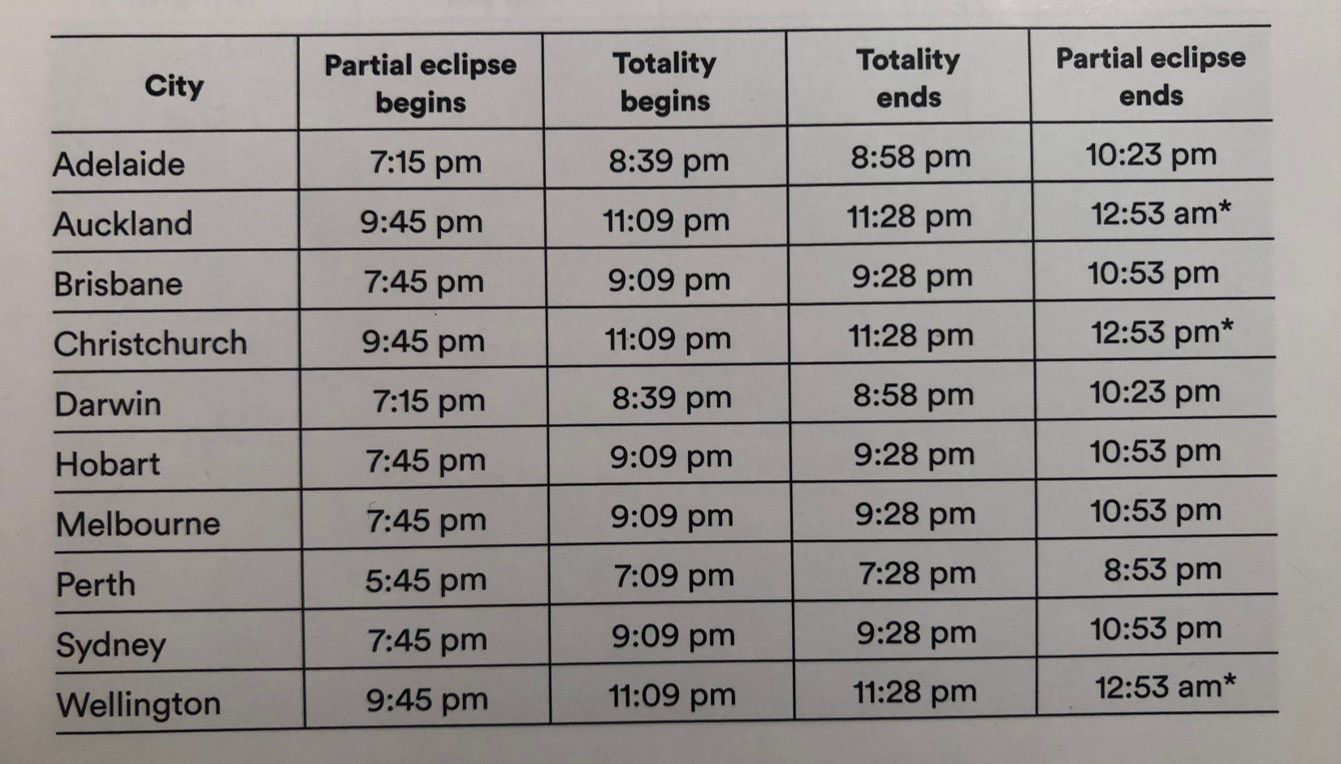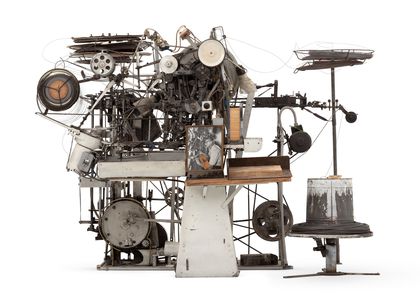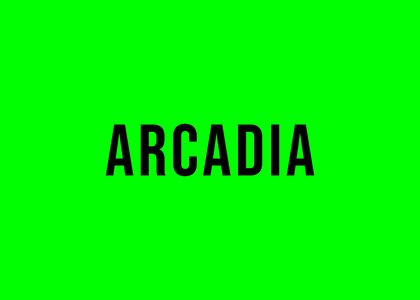
On the night of Wednesday May 26, 2021 a total lunar eclipse will be visible from across Australia and New Zealand*. It will be the first such eclipse visible from these locations since 2018.
The Moon will be at its full phase as it enters Earth’s shadow and this particular full Moon will also be a “Supermoon”.
It is quite safe to watch this eclipse in its entirety by eye or through binoculars or a telescope.
What is a lunar eclipse and how common are they?
You can read more about what eclipses are and how often they occur here.
When does the eclipse happen on May 26 2021?
Times for the eclipse vary depending on your location.
For those in NSW the umbral eclipse, when the Moon moves into the darker part of Earth’s shadow, begins at 7:45pm AEST. The Moon is fully eclipsed from 9:09pm to 9:28pm. The eclipse ends at 10:53pm when the Moon finally leaves the umbra.
For other locations Table 1 gives the times.
You might notice that different sources provide slightly different times from those given here. This is due to differences in how the fuzzy edge of Earth’s shadow is defined and in how the Moon’s motion is modelled.

What will I see?
During a lunar eclipse the Moon first moves into the fainter part of Earth’s shadow, called the “penumbra”, then into the darker central part of the shadow (the “umbra”) then back into the penumbra before leaving the shadow completely. In practice, the penumbral part is barely noticable.
Shortly after the umbral eclipse begins you will see a dark “bite” missing from the Moon’s lower edge. This grows until the Moon is completely inside the shadow. “Totality” begins now. You will notice the Moon has turned a reddish colour. The reddish colour fades to grey as totality ends and the Moon moves out of Earth’s umbral shadow.
The movement of the Moon through Earth’s shadow gives a powerful impression of the real movement of the Moon in its orbit about the our planet.
Why does the Moon turn red during a total lunar eclipse?
When the Moon is fully immersed in the dark part of Earth’s shadow (the umbra) it takes on a reddish colour due to light being bent or refracted onto the Moon by the Earth’s atmosphere. But there is a little more to it than that.
The Sun, Earth & Moon are perfectly aligned during a total lunar eclipse. This is called a syzygy. Light from the Sun passes through Earth’s atmosphere and is deflected (or refracted) into the shadow and onto the Moon as if the atmosphere was acting like a prism. You might notice that the blue light is bent more by the prism. So why doesn’t the Moon look blue? The red, orange and maybe a little of the yellow light passes right through Earth’s atmosphere and is refracted towards the Moon but the green, blue, indigo and violet light (yes, that’s all the colours of the rainbow!) are scattered in all directions into the atmosphere. If you look up you will see this blue light – its the blue of the sky.
There is one more effect that determines the colour of the Moon when it it totally eclipsed. As well as the refraction and the scattering there is dust in Earth’s atmosphere that simply blocks some of the light from reaching the Moon. This just darkens the red colour.
The refraction, scattering and blocking effects vary slightly from eclipse to eclipse so the Moon’s exact colour also varies. It can be brown, reddish brown, coppery or even a blood red. Hence the term “blood Moon”.
Is the full moon for this total lunar eclipse also a Supermoon?
The original definition of a supermoon was ambiguous and unclear. Astronomers, disliking ambiguity, have since come up with numerous, but more precise, definitions. I prefer that from the Australasian Sky Guide: “A supermoon is when the full Moon is within 24 hours of perigee” – perigee being when the Moon is at the closest to Earth in its elliptical orbit about our planet. All the definitions, however, are quite arbitrary.
The Moon will be closest to Earth (in this orbit) on Wed May 26 at 11:50am being at a distance of 357,311km. The full Moon occurs at 9:14pm (while eclipsed) and it will be 357,462km away. The time difference is just 9 hours and 24 minutes, and that makes it a supermoon.
The best time to observe a supermoon is as it rises and this is always close to the time of sunset.
Whatever you want to call it don’t miss this opportunity to witness another grand spectacle free of charge from the universe!
The Sydney Observatory Total Lunar Eclipse Event
Sydney Observatory is hosting a live stream of this eclipse. You can watch it here.
* This eclipse will also be visible from New Guinea, the Pacific region and large parts of south east Asia and the Americas.


